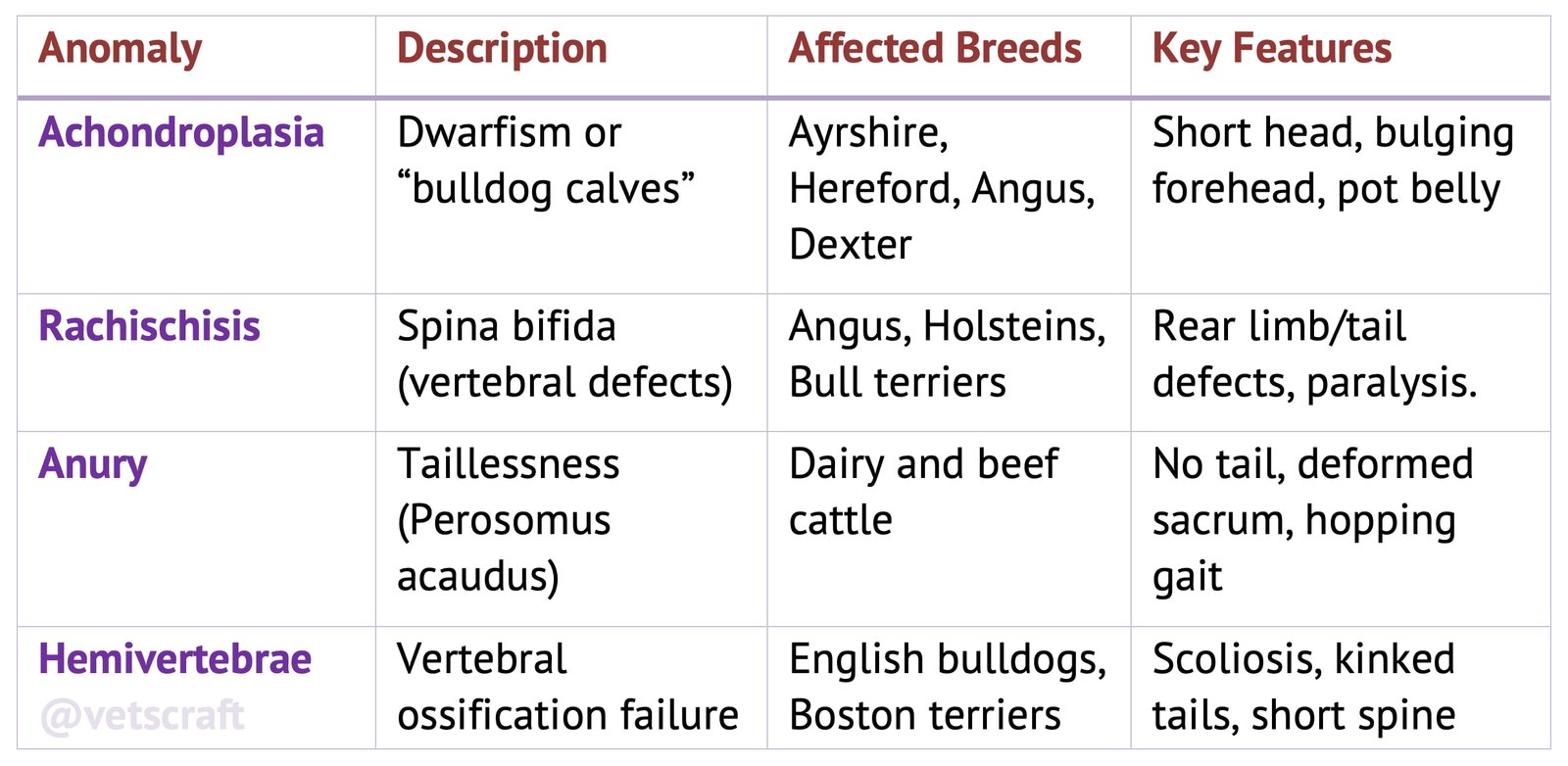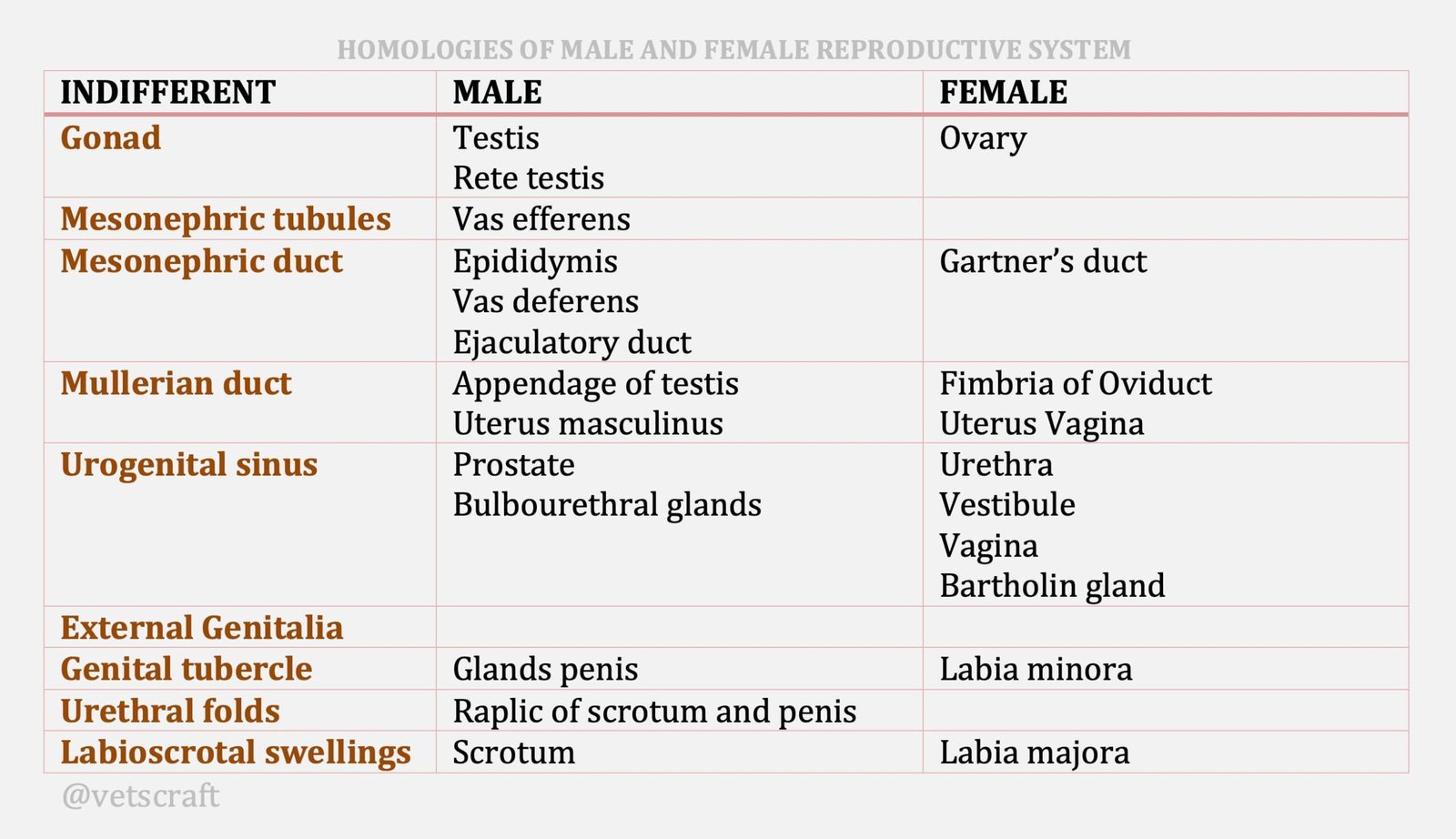TABLE OF CONTENTS
Skeletal Anomalies
Skeletal anomalies in animals include achondroplasia (bulldog calves), spina bifida or rachischisis, anury, and hemivertebrae.

Achondroplasia
Achondroplasia, or dwarf, “comprest” or “bulldog calves” conditions are seen in all breeds but most common in Ayrshire , Hereford, Angus, Dexter breeds.
The most common type is the brachycephalic shorter. It is characterised by short broad head, bulging forehead, malocclusion of the jaw, prognathism of the mandible, pot belly, low viability and great susceptibility to bloat and dystocia. This type was generally considered to be due to simple autosomal recessive defect.
Rachischisis
Rachischisis or Spina Bifida is the absence of the dorsal portions of the vertebrae or vertebral arches often in the lumbar or sacral region with defective rear limbs and tail and paralysis of the rear parts.
It observed in Angus, Holsteins, Bull terriers and other animals. May resemble the Perosomus elumbis monster.
Anury
Anury (Taillessness) or Perosomus acaudus is the common defect in dairy and beef cattle.It characterized by a lack of coccygeal vertebrae and deformed sacral vertebrae with a sunken perineal region and in some cases a characteristic hopping gait.
Anury condition could not be proven to be genetic in nature.
Hemivertebrae
Hemivertebrae is most common in English bulldogs and Boston terriers.
It characterized by failure of the centers of ossification to unite. Scoliosis, kinked tails and a shortened spine are present if many vertebrae are involved.

